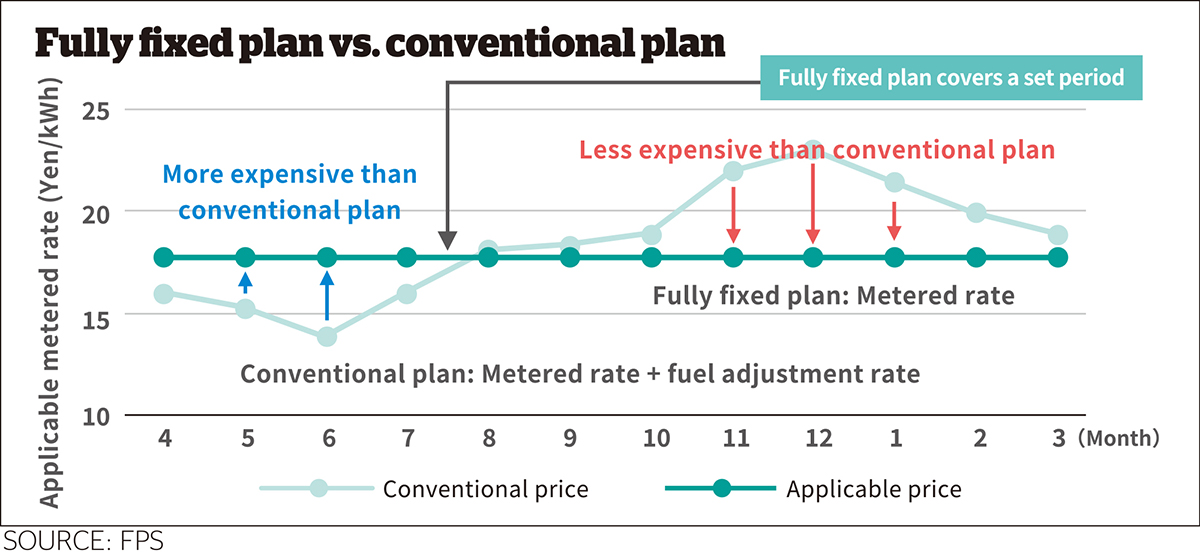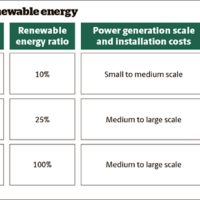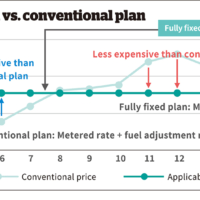To promote the use of renewable energy in Japan, it is essential to ensure a balance between supply and demand, according to Soma Ito, director of the Renewable Energy Division at FPS Inc., which specializes in supplying renewable energy and providing clean energy solutions.

In a recent interview with The Japan Times, Ito said Japan is still transitioning to renewable energy sources, and the existing infrastructure is not making full use of the solar power being generated.
“The expansion of solar power generation in Japan has been notable, even in comparison with other countries. However, there is a geographical imbalance in the distribution of solar power generation facilities, with some regions, such as Kyushu and Hokkaido, having a significantly higher concentration of these facilities than others,” Ito said.
While areas like Tohoku and Hokkaido offer ideal conditions for wind power, the major cities, particularly Tokyo, have the highest energy demand. To bridge this gap, developing a robust power transmission infrastructure is essential. FPS tackles this challenge by providing technical support for companies to accelerate the introduction of renewable energy.
The initial challenge in increasing the rate of renewable energy use in companies is where proactive engagement is being observed in this area. Ito highlighted that while environmental sustainability may not be a top priority for many businesses yet, globally active companies in sectors like food manufacturing and cosmetics are accelerating their transition to renewable energy. This shift is driven by factors such as growing consumer demand and regulatory pressures, especially from the European market, which has stringent environmental standards.
While there is a possibility that other companies will eventually follow the leaders, Ito sympathized with those hesitant to accept the potentially higher costs to survive harsh competition.
However, he highlighted that the long-term benefits of transitioning to renewable energy cannot be overlooked.
“In the context of a 10- or 20-year time frame, with persisting concerns about rising fuel and electricity costs, providing a stable, direct supply of electricity using renewable energy will be effective risk management strategy,” he said.
FPS offers four distinct plans for introducing companies to solar power. One is the self-consumption plan, whereby electricity is generated on-site by a company-owned facility.
Alternatively, the on-site facility may be owned by a third party who supplies power to the company under a power purchase agreement. This kind of arrangement also works when the facility is situated off premises, changing it to an off-site PPA.
FPS also provides services that include various operations, such as supply and demand management to support companies that build power plants on their own land to generate renewable energy.
One potential challenge with solar power is the possibility of an imbalance between supply and demand. This is because solar panels may create more power than needed during the day. However, FPS addresses this issue with its virtual PPA solution, which enables the sale of surplus electricity on the market and the issuance of environmental value certificates.

The company also offers a battery storage management service to ensure optimal use of surplus electricity. Battery power can be used during shortages, traded, or sold to electricity users through the renewable energy aggregation service. The company also performs the complex regulatory and operational tasks required of renewable electricity producers.
These services are made possible by the extensive experience FPS has in navigating the electricity market.
“Our supply and demand management team is responsible for monitoring daily market prices to determine the optimal prices at which electricity should be purchased and sold. Additionally, there is a specialized team that focuses on trading electricity futures. This team is dedicated to generating profit through short- to medium-term investments. This comprehensive approach enables us to assist our clients in generating additional revenue beyond their core business operations,” Ito said.
In some cases, companies may need to purchase electricity to supplement on-site generation during periods of high demand or insufficient sun. Some companies may have opted to source all or a portion of their electricity from external suppliers by default. In such cases, the most efficient and cost-effective method for procuring electricity will vary from one company to another, depending on the specific circumstances and objectives.
FPS offers three distinct approaches to procurement. The first method is the conventional approach, whereby the price is subject to monthly fluctuations in line with fuel prices and rates on the electricity spot market. This approach can expose businesses to price volatility.
The second option is to have the unit price of the metered charge change every 30 minutes in line with wholesale market prices. This is also highly volatile, but it can be an optimal choice for companies that use a considerable amount of electricity during periods when market prices are unlikely to be high, or for companies that can regulate their usage in line with market fluctuations. The third option is to fix the unit price for the agreed-upon contract period, regardless of fuel prices or market prices, which provides stability and predictability.
With these diversified solutions and approaches, FPS is able to cater to the specific needs of companies that are exploring the use of renewables or trying to increase their usage ratios.

“Currently, our customer base is mainly composed of manufacturing companies listed on the (Tokyo Stock Exchange’s) prime market, but we are able to tailor our solutions to businesses across various industries,” Ito said.
For instance, a Japanese subsidiary of a major shipping company has decided to gradually introduce renewable energy in accordance with demand when using off-site power purchase agreements. This will be efficient for the company as any excess electricity will be purchased by FPS.
“In another instance, a manufacturer of agricultural machinery approached us with an idea to install a stilted solar power generation system on fields where crops are grown. This would allow for more effective use of farmland. The generated electricity will be sent to their factories and offices,” Ito said.
FPS’ parent company GLP, a global builder and operator of warehouses and other logistics real estate, also makes use of existing resources to generate renewable energy. Solar systems are installed on the roofs of each large warehouse to generate power for itself, with any surplus purchased by FPS for distribution within the group or to external customers.
To expedite the deployment of solar power, Ito suggests that government policies be implemented to reduce transmission charges during daytime peak generation periods. He is also an advocate of negative pricing systems like those used in Germany, where power prices can fall below zero during periods of oversupply. These measures would incentivize the adoption of storage batteries, ultimately contributing to an overall increase in the renewable power ratio.
Optimizing the creation and use of electricity requires a multifaceted approach that entails monitoring and keeping up with policy changes and regulations, evaluating and balancing the facilities available, and identifying ways to promote the adoption of renewable energies.
In addition, a number of scenarios must be considered, including the potential for on-site generation and appropriate ways to manage periods of shortage and surplus.
“It would be a significant financial burden for companies to handle this internally. By leveraging the extensive experience of FPS’ experts in the electricity sector, companies can simplify this complex process while saving money,” Ito said.
FPS remains committed to helping companies develop and implement economically viable decarbonization plans and create balanced portfolios of different power sources that align with each company’s business profile.







